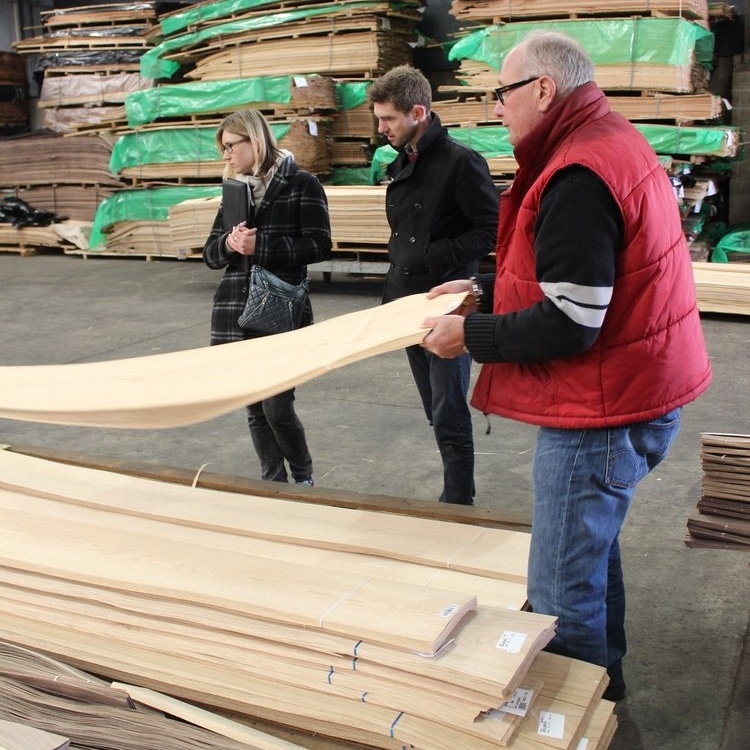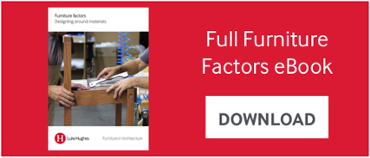Wood veneers, once cut, can be matched to reach the desired look of the furniture. Read on for tips on using veneers in your design project.
Please note: this information is based on the experience of Luke Hughes; it is not intended to be the final word.
Veneer matching
In your design project, the pattern variety of the veneers are only limited by the ingenuity of the designer and the craftsman.
The most popular techniques are:
1. Book matching
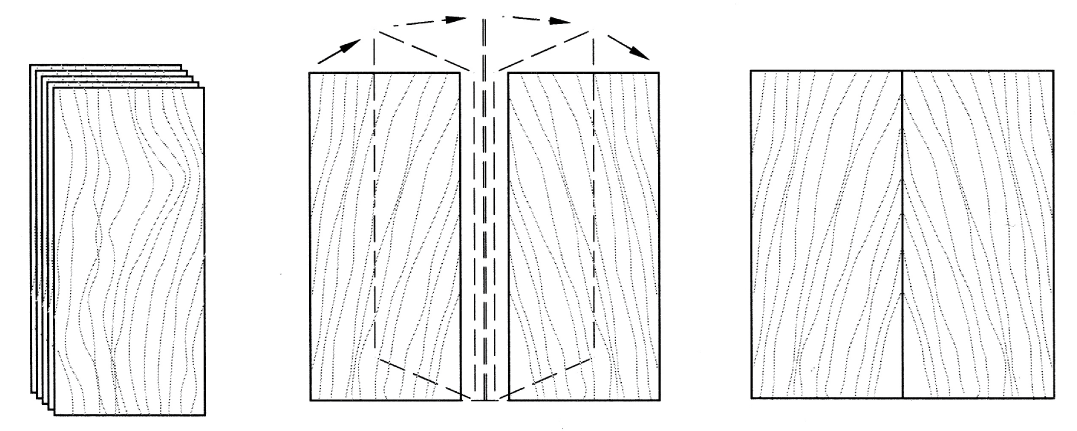
Book matching is commonly used in architectural details (doors and panelling). It is inclined to give a ‘pulsing’ effect on large surfaces if the veneers are highly figured, and to show a ‘lawn-mower’ effect (changes of light with different direction of the ‘nap’ caused by the direction the timber fibres are cut) with light coloured veneers.
2. Quartered book matching
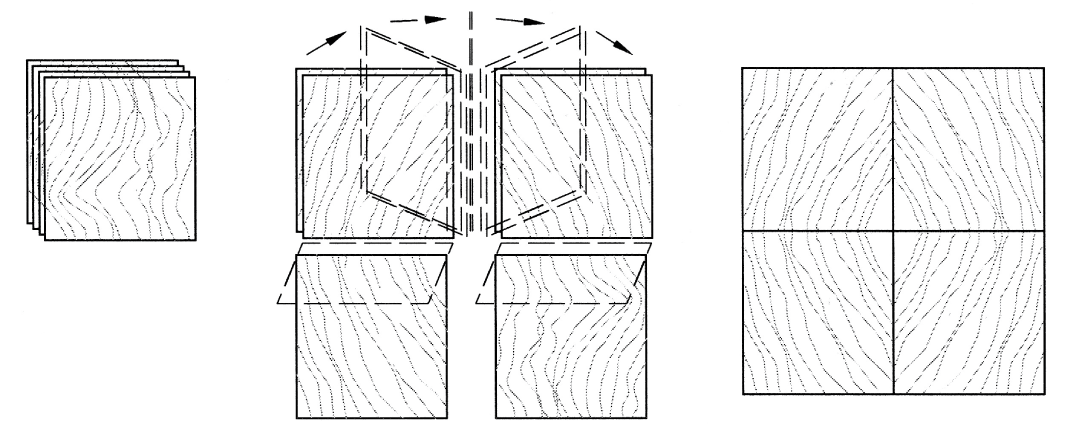
Appropriate to large surface areas that are to be covered with burrs and exotic timbers, and where available leaf sizes are limited.
3. Slip matching
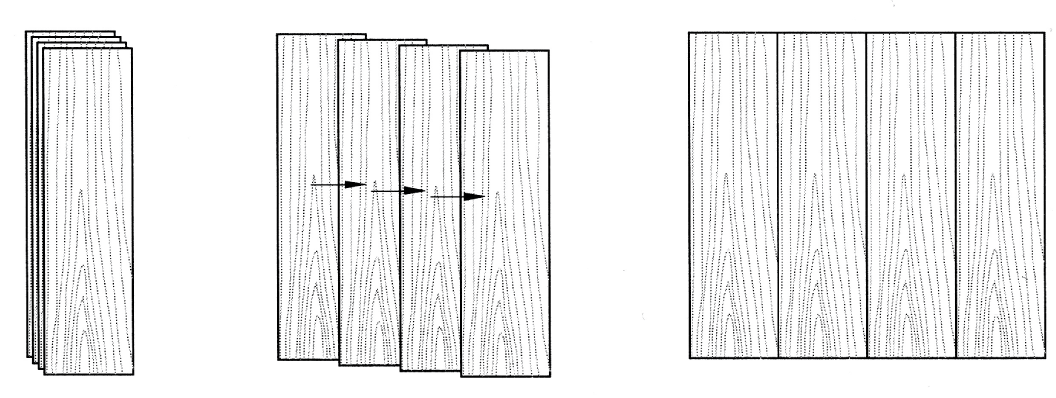
Appropriate for uniform colour and design. Slip matching is achieved by laying the veneers in sequence across a panel; particularly useful for boardroom table tops.
4. Random matching
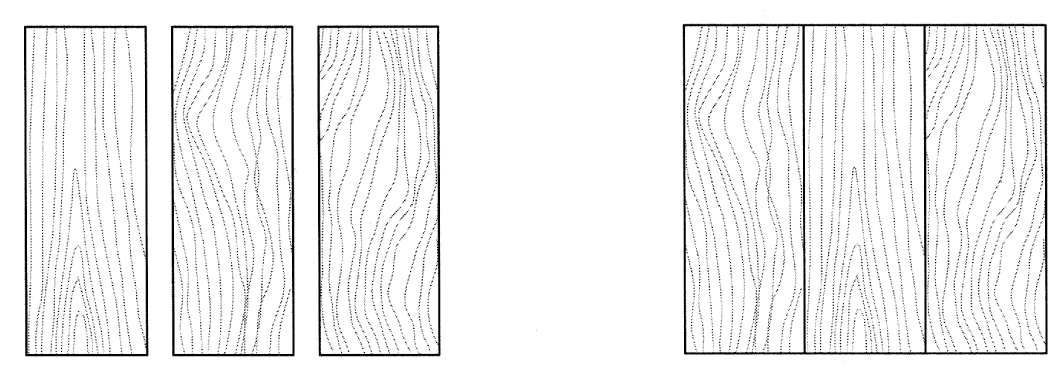
Mixing veneers from various flitches gives a ‘plank’ effect which is useful for reproduction furniture or where the effect needs to be coarser than normal.
Case studies
At St Catharine's College in Cambridge, we designed 42 of our signature Folio chairs in European oak solids and veneers with a deep navy leather upholstery.

At the King and Spalding London offices, we designed a bespoke meeting room table and credenza units featuring stained burr walnut veneer.
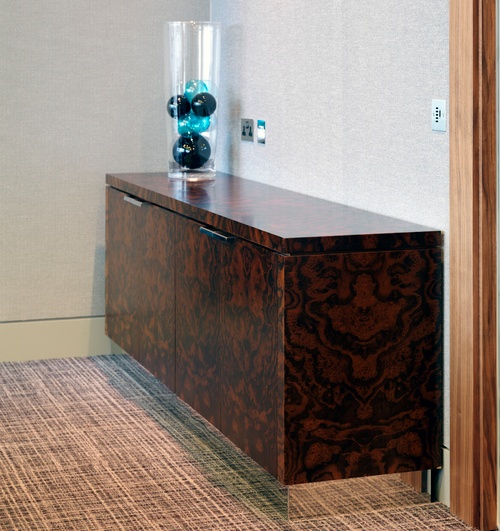
More technical knowledge on working with materials can be found in our eBook 'Furniture factors: Designing around materials'. Click below to download.
Enjoy the article? Delve deeper into Luke Hughes & Company’s place in the Arts and Crafts tradition with the fascinating new book 'Furniture in Architecture' . Available through Thames & Hudson


